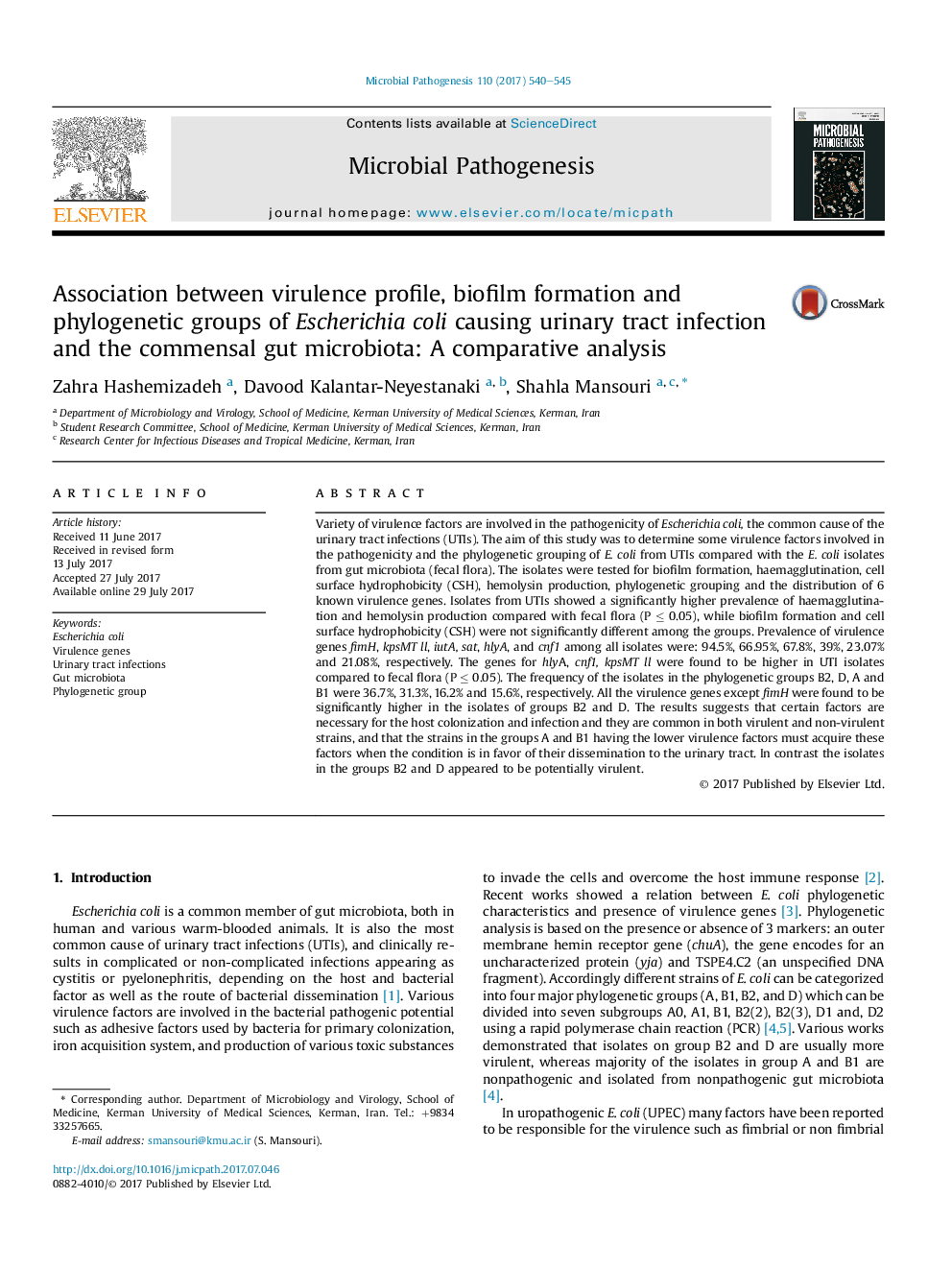| کد مقاله | کد نشریه | سال انتشار | مقاله انگلیسی | نسخه تمام متن |
|---|---|---|---|---|
| 5673710 | 1593679 | 2017 | 6 صفحه PDF | دانلود رایگان |
- E.coli isolates from UTIs display more virulence factor than the normal gut microbiota.
- Phylogenetic group B2 and D were more prevalent in UTI isolates.
- Certain virulence factors are common among both UTI and normal gut microbiota.
- Shared virulence factors in fecal flora or UTIs may be used for survival or initial colonization.
Variety of virulence factors are involved in the pathogenicity of Escherichia coli, the common cause of the urinary tract infections (UTIs). The aim of this study was to determine some virulence factors involved in the pathogenicity and the phylogenetic grouping of E. coli from UTIs compared with the E. coli isolates from gut microbiota (fecal flora). The isolates were tested for biofilm formation, haemagglutination, cell surface hydrophobicity (CSH), hemolysin production, phylogenetic grouping and the distribution of 6 known virulence genes. Isolates from UTIs showed a significantly higher prevalence of haemagglutination and hemolysin production compared with fecal flora (P â¤Â 0.05), while biofilm formation and cell surface hydrophobicity (CSH) were not significantly different among the groups. Prevalence of virulence genes fimH, kpsMT ll, iutA, sat, hlyA, and cnf1 among all isolates were: 94.5%, 66.95%, 67.8%, 39%, 23.07% and 21.08%, respectively. The genes for hlyA, cnf1, kpsMT ll were found to be higher in UTI isolates compared to fecal flora (P â¤Â 0.05). The frequency of the isolates in the phylogenetic groups B2, D, A and B1 were 36.7%, 31.3%, 16.2% and 15.6%, respectively. All the virulence genes except fimH were found to be significantly higher in the isolates of groups B2 and D. The results suggests that certain factors are necessary for the host colonization and infection and they are common in both virulent and non-virulent strains, and that the strains in the groups A and B1 having the lower virulence factors must acquire these factors when the condition is in favor of their dissemination to the urinary tract. In contrast the isolates in the groups B2 and D appeared to be potentially virulent.
Journal: Microbial Pathogenesis - Volume 110, September 2017, Pages 540-545
